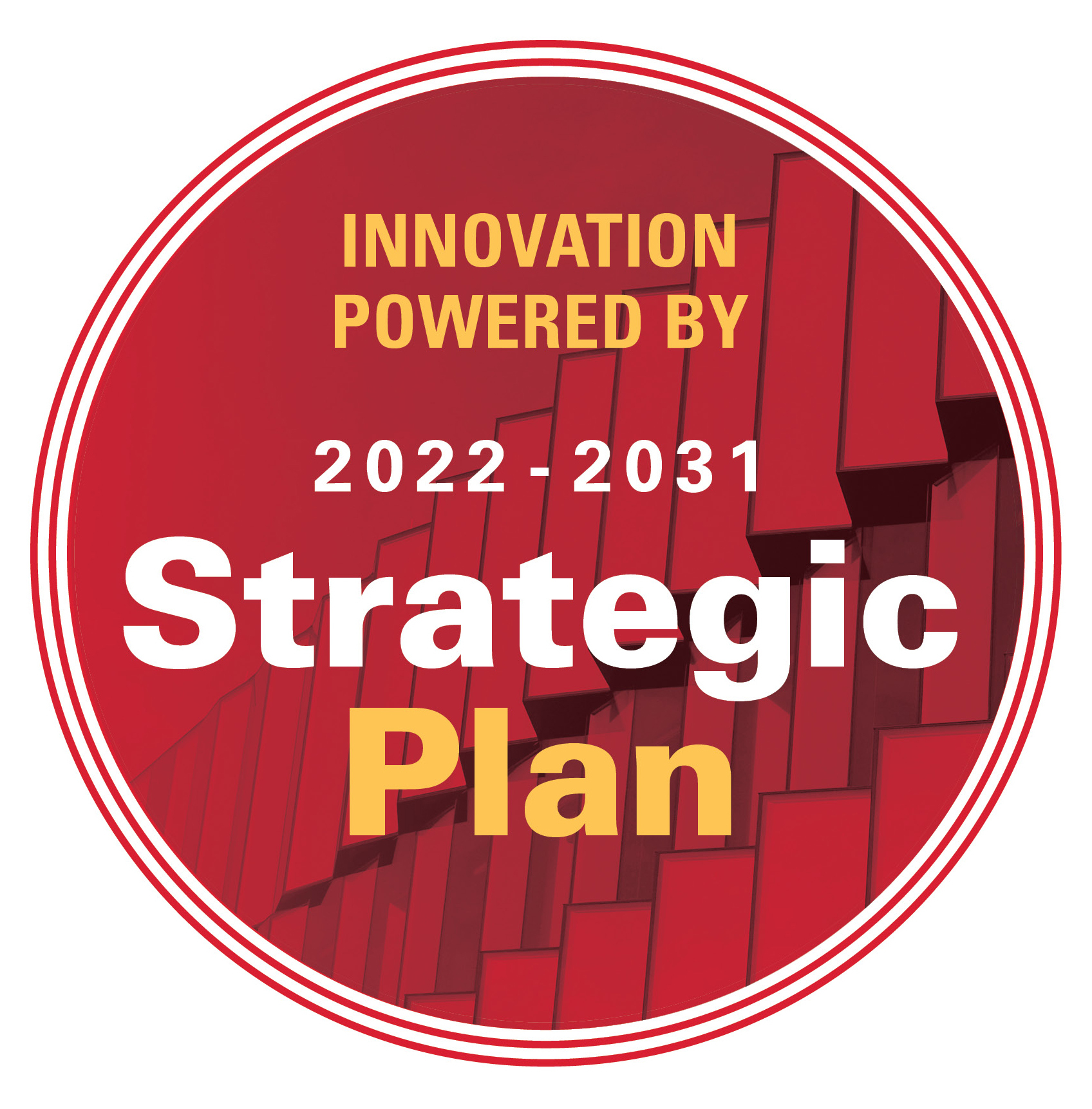Strategic plan funds help advance a long-term STEM project
Author: Anne Krapfl
This is an archived story. The content, links and information may have changed since the publication date.
Author: Anne Krapfl
Nineteen faculty- and staff-led projects were selected earlier this year for their commitment to advance one or more of the five aspirational statements in Iowa State's 2022-31 strategic plan. Those 19 are in addition to nine initial investments announced in June 2022 by President Wendy Wintersteen when the strategic plan received approval from the state Board of Regents.
In collaboration with the strategic initiatives team in the president's office, Inside will provide periodic stories on the progress of funded projects.

Associate professor of education Ben Van Dusen (left) will collaborate with associate teaching professor of physics Lekha Adhikari to pilot a cutting-edge student assessment in the spring. Adhikari serves as course coordinator for a gateway physics course, PHYS 231. Photo by Christopher Gannon.
Passing introductory science courses poses a significant barrier to students completing degrees in the STEM (science, technology, engineering and math) disciplines. It's an obstacle associate professor of education Ben Van Dusen has been researching for more than a decade. This year, he's using an $80,000 ISU strategic plan award to continue work supported by nearly $6 million in National Science Foundation (NSF) grants over that time. With faculty from two other colleges, he'll pilot a new kind of student assessment in an important physics class.

He said his interest in strategic plan support was to move the pilot forward and begin to build a team of collaborators for the long term.
"The National Science Foundation is increasingly interested in using technology to improve STEM student learning," he said. "I want to position Iowa State as the place nationally to do formative assessment with your students. I can't do that on my own."
Van Dusen's end goal is to build a larger STEM workforce by identifying students struggling to master course content and then targeting resources and strategies to increase success rates in introductory courses with high D or F grades or withdrawals (DFWs).
During FY 2024, Van Dusen's focus is on introductory physics courses, with the goal of reducing DFW rates by 20% overall; 40% among students in underrepresented populations.
In 2015 at the University of Colorado, Van Dusen and colleague Valerie Otero's team launched the LASSO (Learning About STEM Student Outcomes) platform, a free online service offering nearly 100 assessments for STEM disciplines that give instructors feedback about their students' learning. About 400 instructors teaching 2,000 courses at 130 colleges and universities have used it for their physics, biology, chemistry and math courses, amassing a large database of instruction and student learning.
When Van Dusen joined the Iowa State faculty in 2020, he brought LASSO with him. An update, LASSO 2.0, will be launched by the College of Human Sciences this month.
But what this former high school physics teacher is most excited about is road testing a new assessment on LASSO 2.0. During spring semester, five faculty members will pilot the assessment in Introduction to Classical Physics I (PHYS 231), involving an estimated 1,250 students. It's a next-generation, artificial intelligence-powered assessment that's both:
Such an assessment shows instructors which students need additional help with specific skills, and multiple snapshots throughout the semester could continually inform and modify their instruction to meet those needs.
The new assessment will generate reports for instructors on their students' abilities and skills, basic initially but growing in complexity and usefulness as their collaboration deepens.
Van Dusen said other physics instructors around the country are waiting to use the assessment spring semester. The resulting database will help researchers identify useful connections between student skills and instructional strategies.
His intent is to attract collaborators on campus to make LASSO 2.0 a robust service hosted at Iowa State but available nationally.
"I would like this to be sustainable here, for Iowa State to offer this footprint that serves institutions of all sizes in this country. It's a one-stop shop that's free for instructors and more useful than anything out there," he said. "It will position Iowa State as the leader in online STEM formative assessment for instruction and research."
Physics 231 and 232, gateway courses for all engineering and many science majors, also are the focus of a three-year, cross-college provost office initiative that began this fall. Physics and engineering faculty are teaching sections of the courses while they redesign the content, implementing best practices in STEM education and identifying topics for additional tutoring and supplemental instruction.
Van Dusen's strategic plan funds support a piece of his summer work and a graduate student in human computer interaction for spring semester and cover contracts (2) with programming and education research companies to launch LASSO 2.0 and to monitor and tweak the assessment tool so the reports it generates are helpful to instructors.
Van Dusen's most recent NSF award arrived this fall, a two-year, $500,000 NSF "incubator" grant to develop a plan to scale up LASSO 2.0 and the assessment tool to add K-12 STEM teachers and other STEM disciplines. If subsequently approved for implementation funding, it would serve as a research infrastructure for STEM education researchers nationally.
He is working with the Bill and Melinda Gates Foundation on a proposal to leverage his current work and expand the new assessment tool into math and chemistry courses.
Van Dusen noted that a faculty member's ability to provide instruction that meets the needs of students with widely varying proficiency and skills mastery begins with a better assessment of what each student knows -- not an easy task in a class of 100. His work is an innovative approach to advancing Iowa State as a student-centric leading research university.